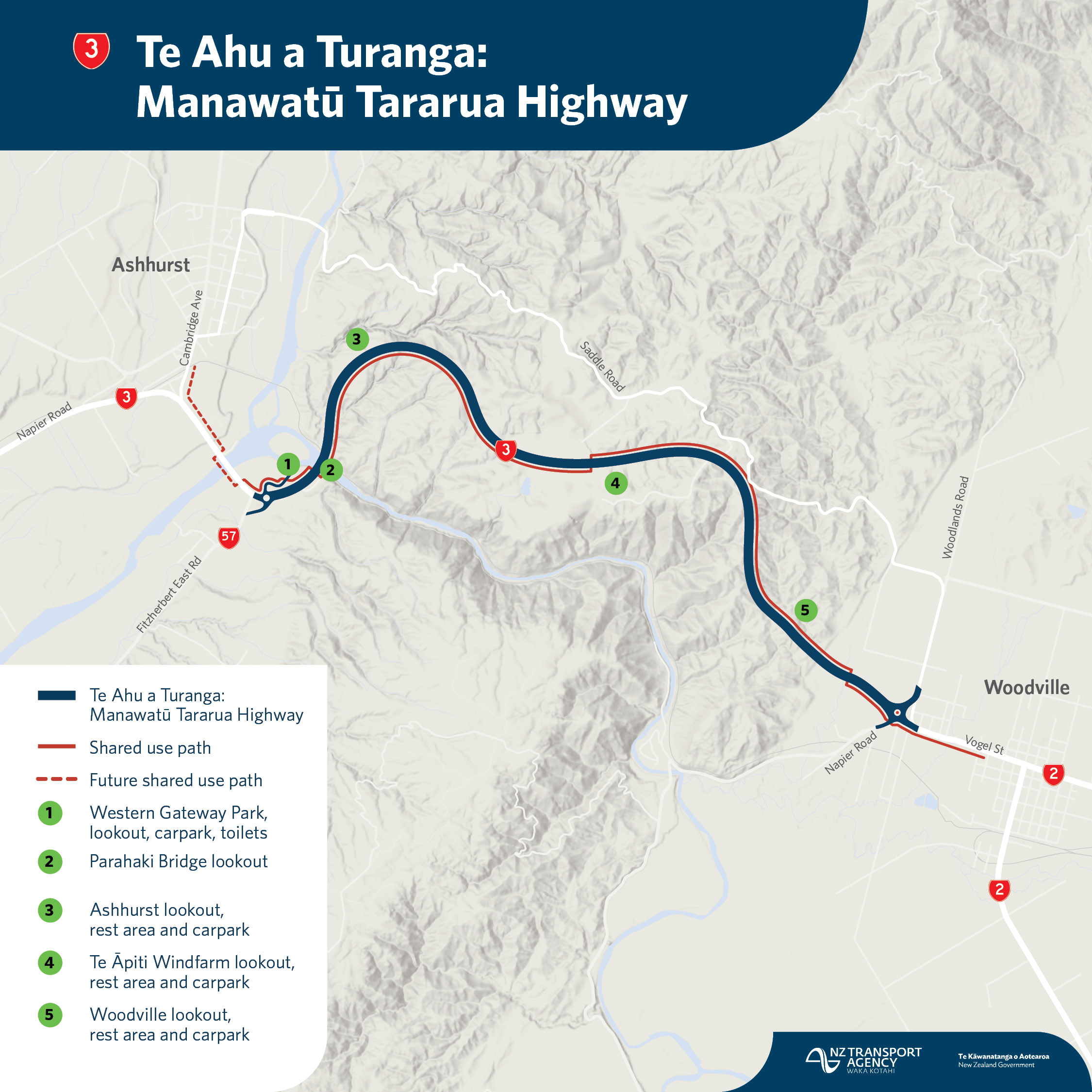A major slip in April 2017 left SH3 through the Manawatū Gorge impassable. A new road has been built over the Ruahine Range, to provide a safe, resilient, and efficient route between Woodville and Ashhurst. The new highway opened to traffic on 11 June 2025.
The new 11.5km highway between Ashhurst and Woodville is a safer, more resilient, and efficient route across the Ruahine Range.
There are two lanes in each direction, a central median barrier, and a 100km/h speed limit. The travel time on the road is between 10-12 minutes.
This vital connection restores access for communities and freight across the lower North Island; thank you for your patience and support throughout the project.

Entrances and exits are located at both ends via roundabouts. Once on the highway, the only turning points are at these roundabouts. Three pullover areas provide views of Te Āpiti Wind Farm and the surrounding landscape at the Ashhurst and Woodville ends.
A shared use path (SUP) runs alongside the highway for pedestrians, cyclists, and recreational users. Access to the SUP is from the new Western Gateway Park in Ashhurst, which offers parking and amenities for those exploring the Te Āpiti region, or from Normanby St at the Woodville end.
Cultural narratives and iwi-designed mahi toi featured at lookout areas and on structures across the highway add to the experience of travelling across the highway.
Note that the inclines at each side have steep gradients. For people travelling west (from Woodville), the incline is about 8.5 per cent, while people travelling east from Ashhurst will experience a 10 per cent gradient.
We recommend you check Journey Planner to plan your trip. To ensure your journey goes as smooth as possible, take care on the entry/exit roundabouts, watch your speed on the highway, keep a safe following distance and keep left as much as you can.
CloseThe Western Gateway Park at the Ashhurst end of the highway is open to the public but this area is expected to be completed later in 2025. The current carpark surfacing is temporary and will be strengthened once the weather improves.
We are still working on completing the Wetland Experience and the western tracks.
The wetland area beneath the Eco-Viaduct connects to the shared use path and provides access for those interested in observing the restored wetland environment. It features native plant species such as raupō and swamp maire and offers a quiet spot to take in the surrounding landscape.
The Western Tracks are a recreational shared use path that connects the Te Ahu a Turanga shared use path to Saddle Road, providing an additional link for walkers and cyclists.
We expect both the Wetland Experience and western tracks to be completed later this year.
The disestablishment of site infrastructure will also take place until later in 2025. This includes dismantling the project site office at the Ashhurst end, worker compounds along the highway and the asphalt plant.
The landscaping team will continue to plant native plants after the opening of the highway.
Close